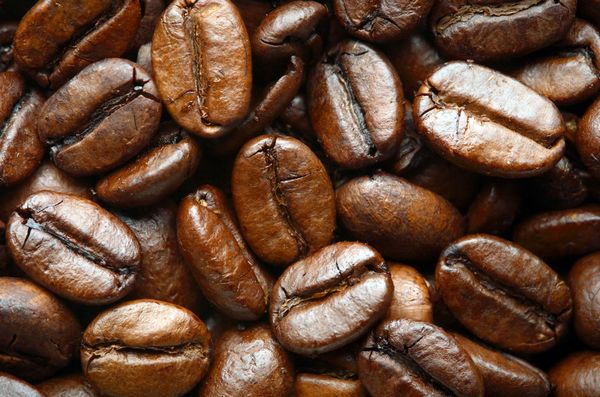There is no way to examine the origin of coffee and the origin of coffee ingredients.
There is no way to examine the source of coffee. One of the many legends refers to the highlands of Cafa province in southwestern Ethiopia. It is said that a shepherd became very excited and lively when he discovered that the sheep had eaten a plant more than a thousand years ago, so he discovered coffee. It is also said that due to a wildfire, a coffee forest was destroyed and the smell of barbecue coffee attracted the attention of the surrounding residents. The people chewed the fruit of this plant at first to cheer them up, then baked and ground it into flour to make bread, which was used as food for warriors to improve their courage to fight. However, these legends are lack of historical documents, only appear in later travel biographies, it is impossible to study the real origin of coffee.
It was not until around the 11th century that people began to use boiled coffee as a drink. In the 13th century, Ethiopian troops invaded Yemen and brought coffee to the Arab world. Because the Islamic doctrine forbids people to drink alcohol, some religious people think that this kind of drink stimulates the nerves and violates the doctrine. Coffee shops were banned and closed for a time, but the Egyptian sultan thought that coffee was not against the doctrine, so the ban was lifted. Coffee drinks quickly became popular in the Arab region. The word coffee Coffee, which comes from the Arabic Qahwa, which means "plant drink", later spread to Turkey and became the source of the word in European languages. The method of growing and making coffee has also been continuously improved and perfected by the Arabs.
However, before the 15th century, coffee had long been monopolized by the Arab world and spread only among Muslim countries; at that time, it was mainly used in medicine and religion. Muslim doctors and monks admit that coffee has the functions of refreshing, brain-waking, stomach-strengthening, body-strengthening and hemostasis; the use of coffee has been documented since the beginning of the 15th century and integrated into religious ceremonies during this period. At the same time, it also appeared in the folk as a daily drink. Because alcohol was strictly prohibited in the Muslim world, coffee became a very important social drink at that time.
Until the 16th and 17th centuries, coffee was introduced into Europe through the merchants of Venice and the Dutch hegemony of the sea. soon, this black drink, which was full of oriental mystery and rich aroma, was competed by the aristocratic gentry class. the price of coffee also rose with the tide, and even produced the title of "black gold", and then in the era of great navigation. Through the spread of shipping, the whole world has been brought into the production and consumption of coffee.

The composition of coffee
Caffeine: it has a particularly strong bitter taste and stimulates the central nervous system, heart and respiratory system. Appropriate amount of caffeine can also reduce muscle fatigue and promote digestive juice secretion. Because it promotes kidney function, it is diuretic and helps the body to expel excess sodium ions from the body. But eating too much can lead to caffeine poisoning.
Tannic acid: the boiled tannic acid will decompose into pyrouric acid, so the coffee that has been brewed for too long will taste worse.
Fat: the most important ones are acid fat and volatile fat.
Acidic fat: that is, fat contains acid, its strength will vary according to the type of coffee.
Volatile fat: is the main source of coffee aroma, will emit about 40 aromatic substances.
Protein: the main source of calories, the proportion is not high. Most of the protein in coffee powder will not dissolve out when brewing coffee, so the intake is limited.
Sugar: coffee beans contain about 8% sugar. After baking, most of the sugars are converted to caramel, which browns the coffee and combines with tannins to produce sweetness.
Fiber: the fiber of raw beans will be carbonized after baking and combine with caramel to form the hue of coffee.
Minerals: contains a small amount of lime, iron, phosphorus, sodium carbonate and so on.
Important Notice :
前街咖啡 FrontStreet Coffee has moved to new addredd:
FrontStreet Coffee Address: 315,Donghua East Road,GuangZhou
Tel:020 38364473
- Prev

Coffee culture and etiquette have no taboos in American style
When Americans drink coffee, it is like playing a game without rules, laissez-faire without taboos. Americans are dismissive of all kinds of exquisite coffee made by Europeans. Americans drink coffee freely, and at the same time, coffee goes deep into their lives and is difficult to separate, and the influence is so deep that it is not considered a life without coffee. It is said that Apollo carried a man to the moon for the first time.
- Next

Ten life sayings related to coffee, both in Chinese and English
1. Life begins after coffee. Where there is coffee, there is life. 2. A yawn is a silent scream for coffee. Yawning is a silent appeal for coffee 3.Given enought coffee I could rule the world. Give me enough coffee and I can rule the world 4. But first coffee. Coffee for everything begins with 5. Rise and grin
Related
- How did the Salvadoran coffee industry develop in Central America?
- What exactly does the golden cup extraction of coffee mean?
- The Origin of Coffee flower
- [2023 Starbucks World Earth Day] there are more meaningful things besides free Starbucks coffee!
- What kind of coffee is there in Spain? 9 Flavors of Spanish Coffee
- Aromatic African coffee| Kenya's coffee culture and historical production area
- Liberica Coffee Bean knowledge: the characteristics of Liberian Coffee beans of the three original species of Coffee beans
- The origin and formula of Spanish latte introduces the taste characteristics of Bombon coffee in Valencia, Spain.
- How to adjust the solution of over-extracted coffee
- What is the tasting period of coffee beans? What is the period of coffee and beans? How should coffee wake up and raise beans?

